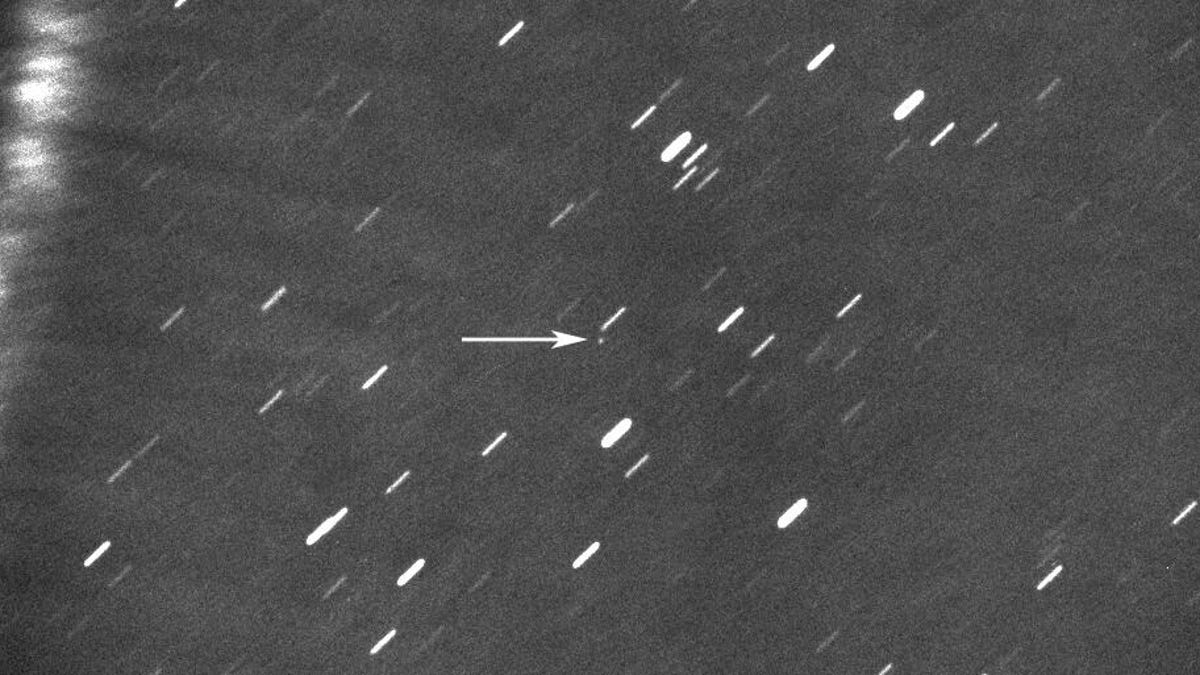Scientists make space history with first intervenusian asteroid ever found
Asteroid 2020 AV2, a true space oddity, orbits entirely between the sun and Venus.
The Virtual Telescope Project's image of asteroid 2020 AV2 isn't much of a looker, but the small dot pointed out by an arrow is a big new discovery. It's the first known intervenusian asteroid, a space rock that travels around the sun entirely within the orbit of Venus.
This makes 2020 AV2 the first Vatira-class asteroid on the books. It's hard enough to spot asteroids that orbit between the Earth and the sun, and even tougher to find ones inside the orbit of Venus, the second closest planet to our star.
This orbital diagram shows 2020 AV2 as the white circle. The blue line represents Earth and the purple line represents the orbit of Venus. Pink is Mercury.
The Zwicky Transient Facility (ZTF) survey program operating at the Palomar Observatory in California had been looking for asteroids within Earth's orbit when it spotted the unusual asteroid. The International Astronomical Union's Minor Planet Center officially designated it "2020 AV2" this week.
Virtual Telescope Project astronomer Gianluca Masi went on a hunt to help confirm the elusive asteroid and managed to capture an image of it. In a statement on Thursday, Masi discussed why it's so hard to spot asteroids within Earth's orbit (of which only 21 are currently known):
"Ask yourself: how many times have I seen Jupiter? How many times have I seen Mercury? Very likely, you saw the former much more often than the latter. Why? Because Mercury's orbit is well inside that of the Earth, so you can see the innermost planet only at dusk, low on the horizon and for a short time." Now imagine trying to spot a much smaller asteroid under those conditions.
Astronomers had been expecting to find an intervenusian asteroid. A paper published in the journal Research Notes of the AAS in July 2019 suggested a Vatira-class rock may be discovered soon. Good timing. That dream has now come true.


